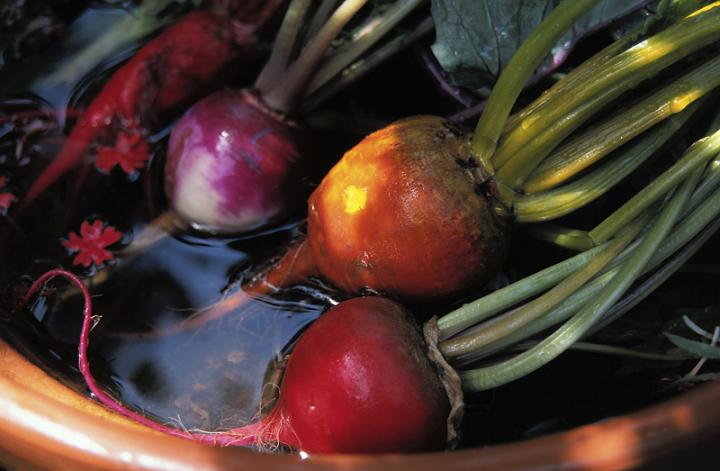
Beets are a cool season vegetable crop. This root veggie grows quickly and has many different varieties which showcase deep red, yellow or white bulbs of different shapes. They can survive frost and almost freezing temperatures, which makes them a good choice for northern gardeners and an excellent long-season crop.
Planting
- A soil pH above 5.5–6 is best, otherwise growth will be stunted. Beets are a good indicator of soil pH.
- Till in aged manure before planting. Beets require especially good nutrition and a high phosphorus level to germinate. Go easy on nitrogen however, an excess will cause sprawling greens and tiny bulbs beneath the soil.
- Wait until soil reaches 50 degrees before planting.
- Plant seeds ½ inch deep and 1-2 inches apart.
- Make sure soil remains moist for germination.
- In zones with low moisture and rainfall, soak the seeds for 24 hours before planting.
- Early crop can be planted in March/April, and late crop anytime from June to September. Successive plantings are also possible as long as the weather doesn’t exceed 75 degrees F. Space plantings about 20 days apart.
- Winter crops are a definite possibility in Zone 9 and above.
Care
- Thinning is necessary, as you may get more than one seedling out of each seed. Thin when they read about 2 inches high by pinching them off. Pulling them out of the ground may disturb the close surrounding roots of nearby seedlings.
- Established plants should be thinned to 3–4 inches between plants.
- Mulch and water well. Beets need to maintain plenty of moisture.
- Any necessary cultivation should be gentle, beets have shallow roots that are easily disturbed.
Pests/Diseases
- Flea Beetles
- Leaf Hoppers
- Mexican Bean Beetles
Harvest/Storage
- Days to maturity tend to be between 50 and 70 for most varieties, although they can be harvested at any time you see fit. If you like larger bulbs, wait longer, but understand they will be tougher and woody.
- Don’t let greens grow above 6 inches before harvesting.
- Don’t forget about the tops! Beet greens have a delicious and distinctive flavor, and hold more nutrition than the roots.
- Fresh beets can be stored in the refrigerator for 5–7 days. Clipping the tops off beets will keep them fresher for longer. Leave about one inch of stem on each beet, and store the greens separately.
- For root cellar type storage, make sure you brush off any soil clinging to these crops, then store them in a cool, dry place. An unheated closet might do, or put them in a cooler in your basement.
- Beets can be frozen, canned and pickled.
- Read more about a new way to store beets in the root cellar.
Recommended Varieties
- ‘Detroit Dark Red’ Sturdy, traditional red variety, round.
- ‘Formanova’ Long, cylindrical beets that grow in the same fashion as carrots. Excellent for canning.
Wit & Wisdom
The humble beet, steamed, boiled, roasted, pickled, borscht’ed—but especially served raw—has emerged as a nutrient-dense food considered especially beneficial for health. Learn more in “Beets: Health Benefits!”
For other greens to use in your cuisine, see the Leafy Greens: Health Benefits page.
Recipes
- Roasted Beets and Arugula
- Grandmother Lida Quinn's Pickled Beets
- Beets and Beet Greens in Cream






